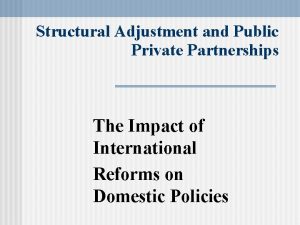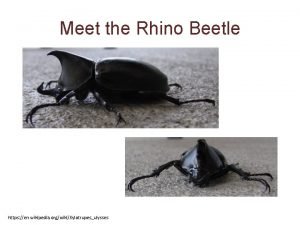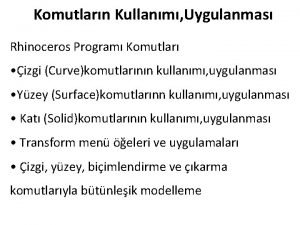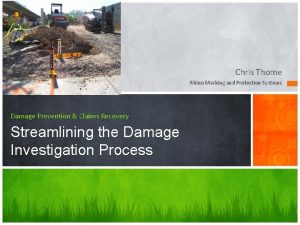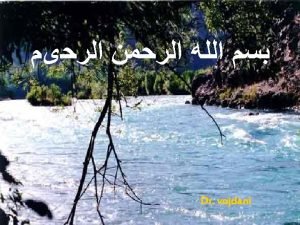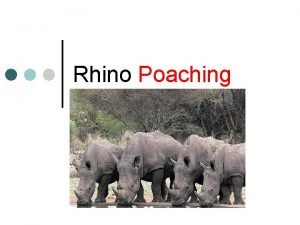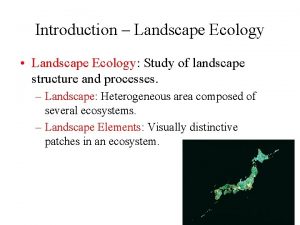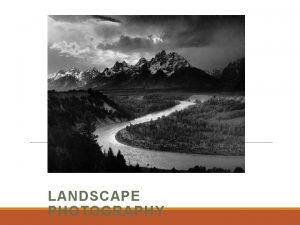Rhino Redux RHINO CONSERVATION AS A LANDSCAPE MANAGEMENT








- Slides: 8

Rhino Redux RHINO CONSERVATION AS A LANDSCAPE MANAGEMENT TOOL IN LAIKIPIA

Actors and Areas Conservancy Area Acres Black Rhino White Rhino Total Solio 17, 000 40 215 255 Ol Pejeta 100, 000 + 114 26 143 Ol Jogi 58, 000 53 23 76 Borana-Lewa 72, 000 85 77 162 Il Ngwesi 13, 000/ 40, 700 0 2 2 totals 260, 000 296 342 638

Black Rhino Accomplishments 1988 – Total Black Rhino Population in the greater Laikipia Landscape = 114 2017 – Total Black Rhino Population in the greater Laikipia Landscape = 296 Almost one Black Rhino/880 acres or 3. 6 sq. km. Gives tourism a focus with increases in tourism revenue, employment and tax revenues. Annual CSR contributions to neighborhoods and communities exceed $2 M/year Islands of peace, security, and innovation during times of stress Demonstrated success of mixed ranching model

Rhino Conservation Challenges in Laikpia High annual costs of security No Government recognition of Wildlife Conservation or Rhino Conservation as a Land Use Carrying Capacity of land for healthy black rhino populations Sophistication of poaching technology and networks

BLACK RHINO CONSERVATION Strategy Goal = Increase Kenya’s total Black Rhino Population Numbers to 2000 animals from 696 today Role of Critical Mass Populations with contiguous landscapes Tsavo/Chyulu/Ngulia = 500 animals Laikipia-Lewa = 500+ animals Other Places with Key populations = 50+ animals Founder populations = 20+ animals

Opportunities for Expansion of Area and Population (occur within the red outline) The MEANS: Private conservancies need: • Philanthropy • Grants • Land use recognition • Shared Management services and costs Community Conservancies need: • Land lease agreements • Public-Private Models • Easements

A Proposal for Private/Corporate/C ommunity Conservancies The Clusters Northern Cluster = 132, 200 acres Mpala, Loisaba , Soit Nyiro, , Kirimun National Reserve, Sabuk and Ol Malo Eastern Cluster = 168, 700 acres Borana/Lewa, Il Ngwesi, Mukogodo and Ngare Ndare Central Cluster = 149, 000 acres Ole Naishu, Lolldaiga Hills, Enasoit, Ol Jogi Southern Cluster = 191, 000 acres Segera, Ol Pejeta, Eland Downs, ADC Mutara , El Karama

Achieving the Goal of 2000 Black Rhinos by 20205 500+ Black Rhinos in Greater Laikipia 3 clusters totaling more than 640, 000 acres must include Land contiguity Innovation in neighborhood protection, land management, and business partnerships Shared monitoring and security services The Indicators for Success 1 Black Rhino for every 800 -1000 acres Security of Land Tenure Recognition by National Government of rhino conservation as a land use Incentives, benefits, and subsidies World Heritage recognition of Laikipia landscape Double the Laikipia black rhino population in 15 years.

